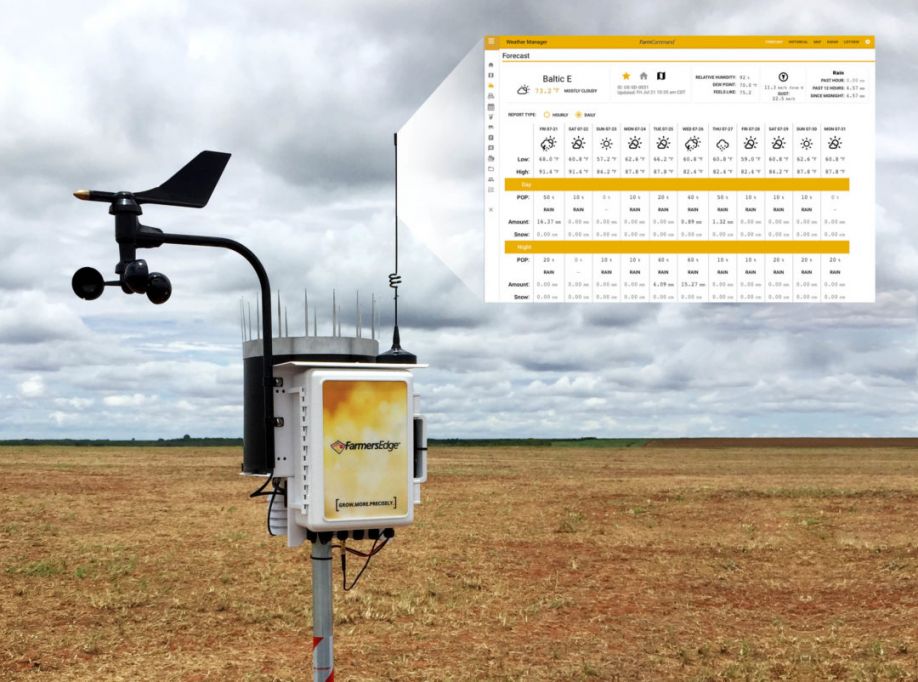Today, companies like Farmers Edge are installing weather stations in their customers fields to acquire accurate, site-specific data. And having a dense network of weather stations enables detailed analyses of regional trends.
How Field-Centric Weather Data Improves Crop Staging Accuracy
Contributed by | FarmersEdge
But what about other uses for all this data being collected by the thousands of weather stations? Researchers and data scientists at Farmers Edge are developing and refining models that help to accurately predict crop growth stages. The rate of development of most crops is related closely to temperature as crops will develop faster when temperatures are warmer and slower when temperatures are cooler. Using a combination of historical and forecasted weather, specific crop characteristics, and agronomic models, accurate stage prediction is made possible. This can help with timing of critical management activities and efficient resource allocation.

Today’s models utilize field-centric weather information from the growers’ own fields to predict precise staging of crops. So what benefit is that to you as a grower?
Herbicide Planning: Every year, yields are reduced because herbicides are sprayed after the crop has exceeded critical growth stages. Growth Stage Prediction will allow for planning to ensure herbicides are applied to minimize the risk of damage.
Insect Treatment: Most insect’s development centres around the same parameters as crop growth. This is nature’s way of ensuring the host (crop) is at the most vulnerable time for the specific insect. Models have been developed for insects such as the Orange Blossom Wheat Midge that accurately predict when the egg laying adults will emerge. This, along with precise crop staging allows for informed decisions on insecticide applications and timing. Other insects where modelling is used to forecast problems include bertha armyworm (canola), alfalfa weevil, and sugar beet root maggot.
Fungicide Decisions: The basic concept of Disease Management is the disease triangle. Three components are required for a disease infection to occur:
- Presence of Pathogen (disease)
- A susceptible Host (crop)
- A conducive environment
The relationship between disease and weather cycles is the basis of many prediction models that can be used to advise growers of disease risk. Modelling can be used to predict such things as conducive environments for such diseases as fusarium head blight, sclerotinia / white mold or Stewart’s disease. Once a risk severity is established, growth models can determine if the crop is in a susceptible stage for the disease. If the answer is YES, fungicide applications can be made – knowing that you have given the fungicide and the money invested on this operation – the best chance for a successful outcome.
A partial list of diseases that can emerge during a hot, dry summer (particularly following a warm winter) include common smut (in corn) and charcoal root rot (in corn and soybeans).
Diseases likely to occur because of a wet, warm spring and summer include foliage diseases (all crops) late blight (potatoes), sclerotinia (beans and canola), stalk rots, ear rots (in corn), phytophthora root and stem rot, and pod and stem blight (in soybeans).
Forecasting and crop staging are just two of the benefits accurate field-centric weather data and tools, like FarmCommand, can offer to make your operation more profitable and more environmentally sustainable.
The content & opinions in this article are the author’s and do not necessarily represent the views of AgriTechTomorrow
Comments (0)
This post does not have any comments. Be the first to leave a comment below.
Featured Product

